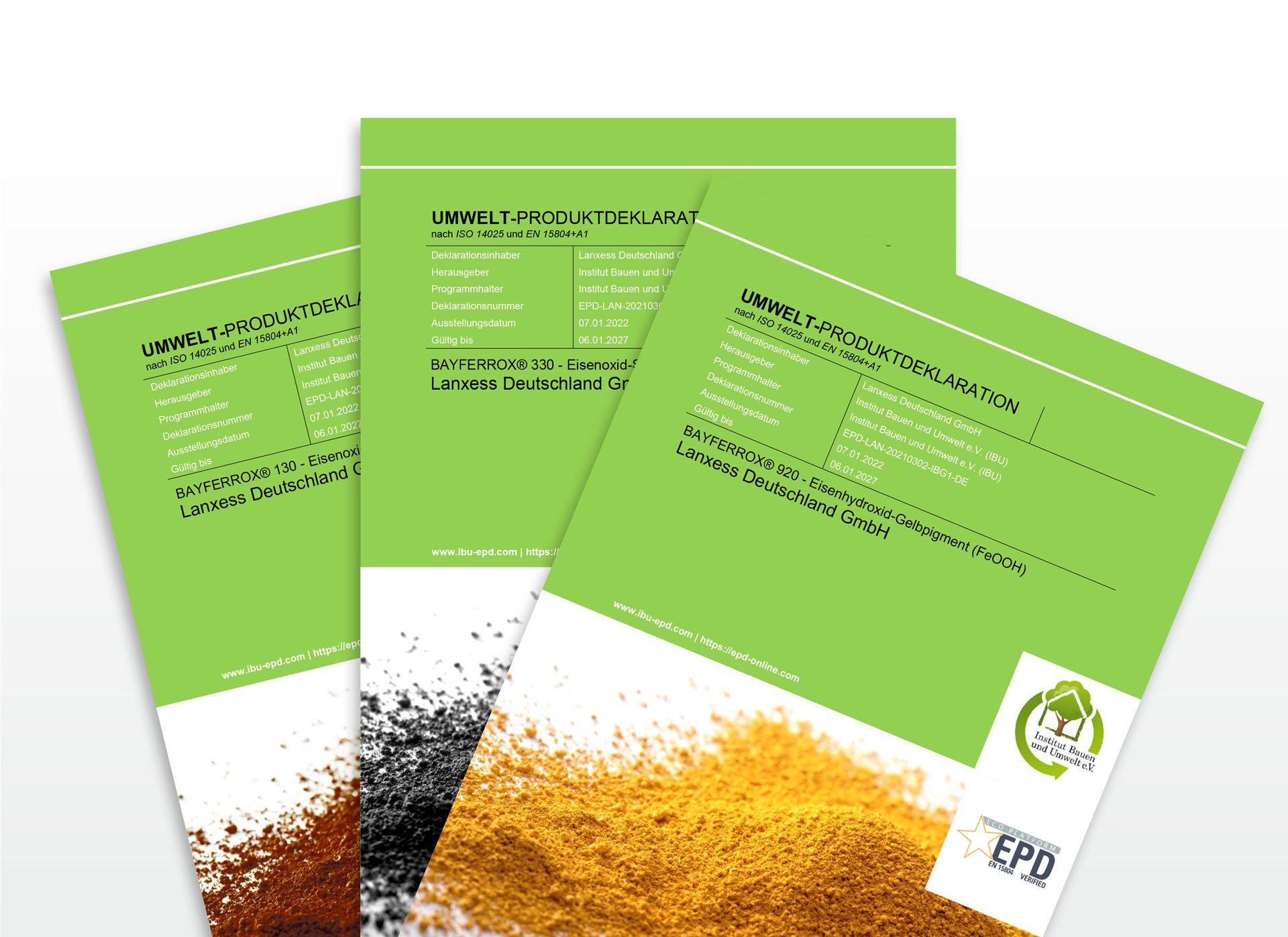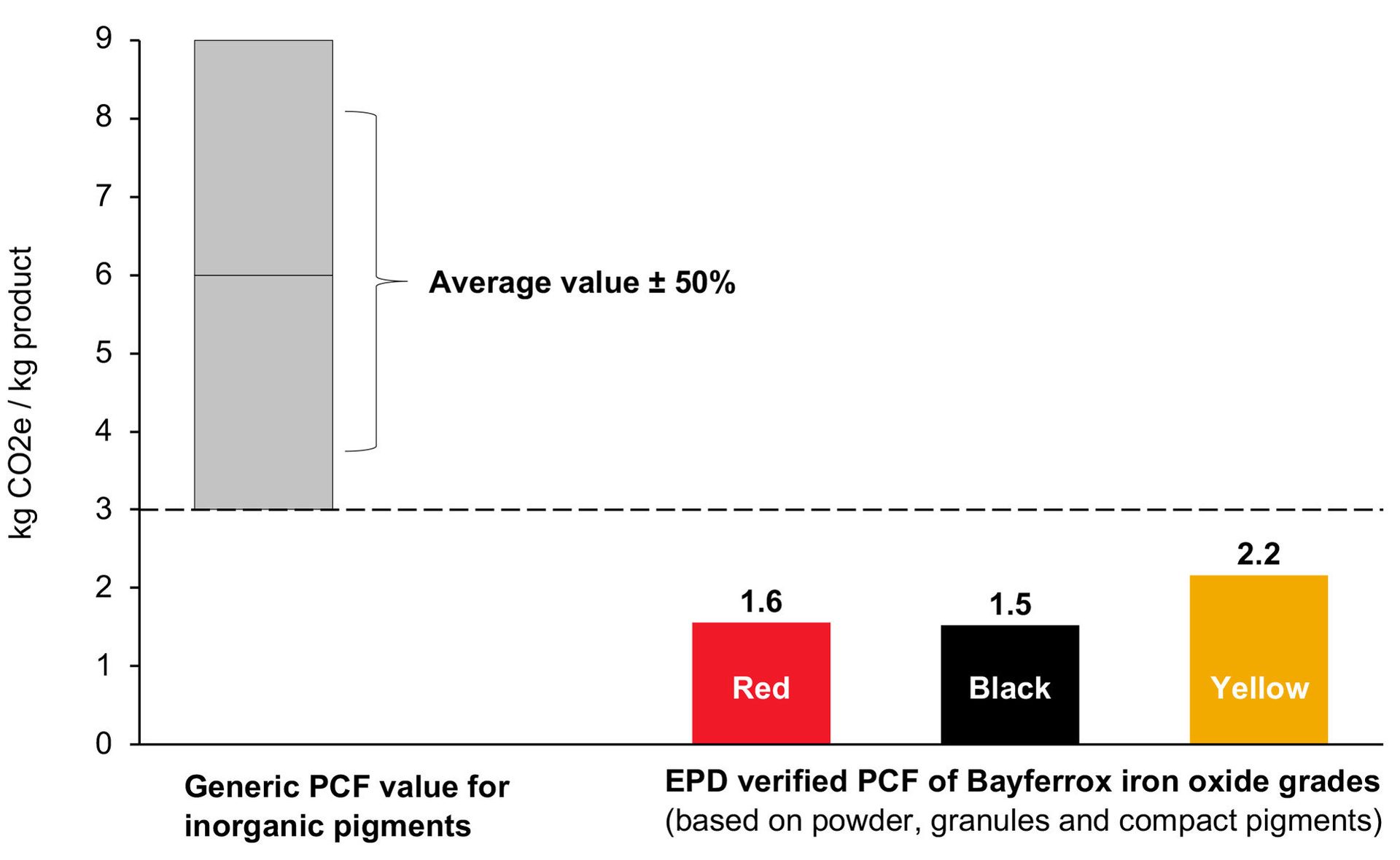Ready to proof -- Clare 4/7/23
CB proofed 4/11 - Clare, can you add the provided headshot and name Daniela Schmitt next to the introdcutory paragraph? One comment for KJ on the headline.
KJ proofed on 4/11. Courtney - I changed the teaser to cap all the first letters, and no punctuation. I think let's use this style to help them stand out.
clj revised on 4/11
Ready for author
Making Sustainability Measurable
How EPDs Are Helping to Achieve Low-Emission Product Strategies Along the Value Chain
PCI Interview with LANXESS, Krefeld, Germany
Environmental product declarations (EPDs) have become an accepted means of communicating the environmental footprints of construction products such as paints and coatings. As a manufacturer of iron oxide pigments, LANXESS recently started offering EPDs for a large number of its products. In this interview, Head of Market Segment Paint and Coatings at LANXESS Inorganic Pigments, Daniela Schmitt, looks ahead and explains how raw material suppliers can help improve the life cycle assessments (LCA) of products for the construction industry and what role EPDs play in this.

Daniela Schmitt
PCI: Currently, only a few raw material suppliers offer verified EPDs. Why is this, and what value can this kind of environmental information offer?
Schmitt: That’s true. The main purpose of EPDs is to provide comparable and reliable data for evaluating the environmental impact of construction projects, so it makes sense that EPDs are currently offered primarily for end products like finished paints and coatings. They are a recognized means of documenting and demonstrating the environmental footprint of products, giving building material manufacturers a way of providing key data for calculating the life-cycle assessments of buildings on the basis of scientific criteria.
Recently, however, another aspect has come to the attention of building material manufacturers: value chain optimization. Published EPDs contain only highly aggregated results. When they are prepared, it is often the first time that many companies realize what a dominant influence manufacturing processes and the raw materials used can have on the environmental footprints of their own products. In this context, the raw materials are vital levers for improving their environmental profile.
It is hugely beneficial if the purchased raw materials also come with their own EPD. Not only does this make the accuracy of the results much greater, it also means that the data consolidated in the information modules is often much more up-to-date than generic data and, for this reason alone, shows a reduced environmental footprint. Last but not least, product-specific EPDs for raw materials are the only way of demonstrating a manufacturer’s efforts to reduce the footprints of its products in the first place. In short, EPDs for raw materials create the necessary transparency for effectively optimizing the environmental footprint of our own value chain.
PCI: How can raw material suppliers like LANXESS benefit by offering EPDs?
Schmitt: We expect the demand for detailed LCA data across the entire supply chain to grow exponentially. We know that our customers are already working on specific strategies to reduce emissions across their supply chains. At the same time, the data users of EPDs, such as planners and auditors who create sustainability certification for buildings, are placing ever-greater requirements on data quality. The focus is increasingly on the raw materials used by the suppliers. This is why we expect that all raw materials used in the manufacture of construction materials will require an EPD verification in the medium term — and this is something that we welcome.
After all, quantifying environmental impact in the form of EPDs on the basis of uniform assessment parameters gives raw material manufacturers that, like LANXESS, continuously invest in environmentally friendly production processes a competitive advantage. This also includes the transition toward energy-efficient processes. The chemical synthesis of iron-oxide pigments, for example, is inherently energy intensive. Looking to the future, the Inorganic Pigments business unit at LANXESS has laid out a road map for continuously lowering the carbon footprint of its pigments. The aim is to reduce carbon emissions at our main production site in Germany by around 50% by 2030 thanks to new technologies and switching to alternative energy sources such as green energy and hydrogen.

In the past, these kinds of cost-intensive investments were all too rarely factored into purchase decisions. But this is changing now. The environmental profile of raw materials is becoming one of the central purchasing arguments among coatings manufacturers.
PCI: The buyer would, therefore, have to select products according to the best supplier principle in terms of their environmental performance. How can this work in practice?
Schmitt: As described, EPDs provide a credible and reliable basis for buyers to compare products from different raw material suppliers. Here is an example: An EPD provides a holistic assessment of products with regard to all environmental impacts. In terms of the raw materials used in particular, the primary focus is currently on the product carbon footprint (PCF). Our products for which an EPD is currently available have a PCF, as confirmed by an independent auditor, of around 1.5-2.5 kg of CO2 equivalent per kilogram of product. This figure can now be compared with that of other product alternatives, provided that an EPD or at least a certified PCF is available. If this is not the case, generic figures have to be used that often reflect a non-specific mean value and can also be prone to major errors. For inorganic pigments, this mean value was quoted some years ago in a publication from a European association of the mineral paint industry as being roughly 6 kg of CO2 equivalent per kilogram of product, ±50% depending on the manufacturing process.

FIGURE 1 ǀ Comparison of generic PCF value for inorganic pigments vs. iron-oxide pigments from LANXESS.
Another current example of LANXESS’ efforts in the area of sustainability is the recent decision to also use “green” sodium hydroxide in the manufacture of fine milled Bayferrox yellow pigments. The supplier of this raw material produces it with renewable energies. It is then deployed in the so-called precipitation process that results in very-high-quality yellow pigments with special properties such as high tinting strength and thermal stability. This “green” raw material helps to cut CO2 emissions in the manufacture of these Bayferrox yellow product groups by up to 40% per kilogram of pigment.

FIGURE 2 ǀ PCF reduction by using green caustic soda for yellow iron oxide production.
As these examples demonstrate, customers can now decide by direct comparison what economic value to ascribe to the product with the better environmental footprint. It should also be remembered that even the same types of construction materials are increasingly competing on the basis of their sustainability profile. As far as we can see, the “green building” certification of buildings is becoming increasingly important in the construction and real estate sectors. The EPDs for the construction materials themselves provide the information base for this. So, the smaller the environmental footprint of a construction material, the bigger its contribution to a positive sustainability rating. Raw materials with a verified EPD, which, in turn, are used in the manufacture of construction materials, can have a positive influence on their LCA.
*Images courtesy of LANXESS.
